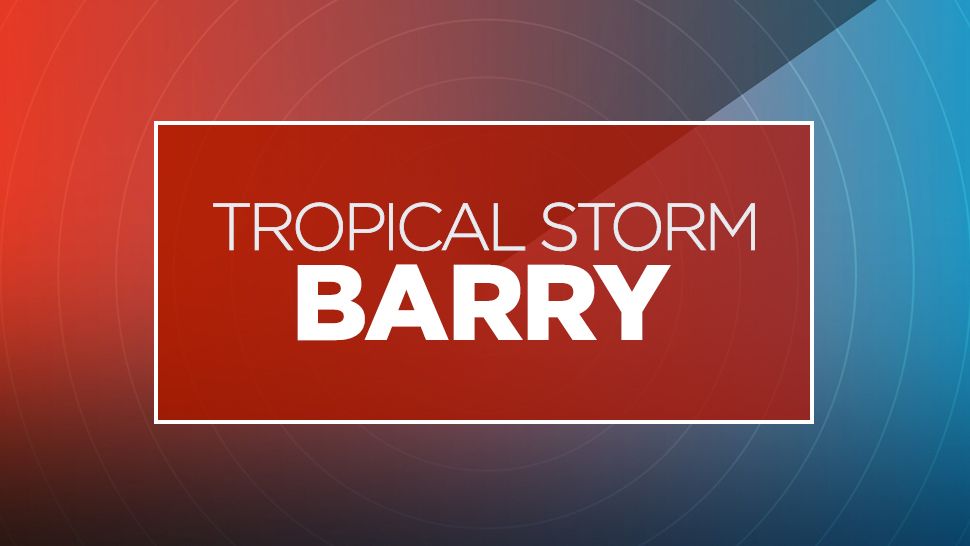ORLANDO, Fla. — Tropical Storm Barry has been downgraded to a tropical depression, but is still producing significant rains across parts of the northern Gulf coast.
- Barry made landfall as a category 1 hurricane
- Storm causing dangerous storm surge, flooding rain
- Should become a tropical depression later today
- TRACKING THE TROPICS: Get tropical updates, forecast models, satellite loops, and more
- STORM SEASON 2019: Latest headlines, debunking hurricane myths, interactive storm tracker, printable hurricane supply checklist
The latest advisory on Barry shows maximum sustained winds have decreased to 35 mph, making it a tropical depression. The minimum pressure is now up to 1008 mb.
The center of Barry is located 20 miles north-northeast of Shreveport, Louisiana.
The movement is to the north at 9 mph.

Barry made landfall Saturday afternoon near Intracoastal City, Louisiana, as a Category 1 hurricane. Barry is the first hurricane of the Atlantic season.
Barry is moving through Louisiana toward the north, and this general motion should continue through Monday before turning to the north-northeast late Monday. Barry is expected to become a remnant low Monday night.

An additional 3 to 6 inches of rainfall is likely across northern Louisiana, Arkansas and Mississippi. Storm totals in southern Louisiana will likely range from 8 to 15 inches.
In addition to the risk of severe flooding, isolated tornadoes remain a possibility.
All tropical watches and warnings have been canceled.
Barry will not have any impact of the weather in Florida. Slightly more moisture will move in for Monday, resulting in a slight uptick in PM storm chances.
We will have the latest on Barry’s impact to the northern Gulf coast on Your Weather on the Ones.



